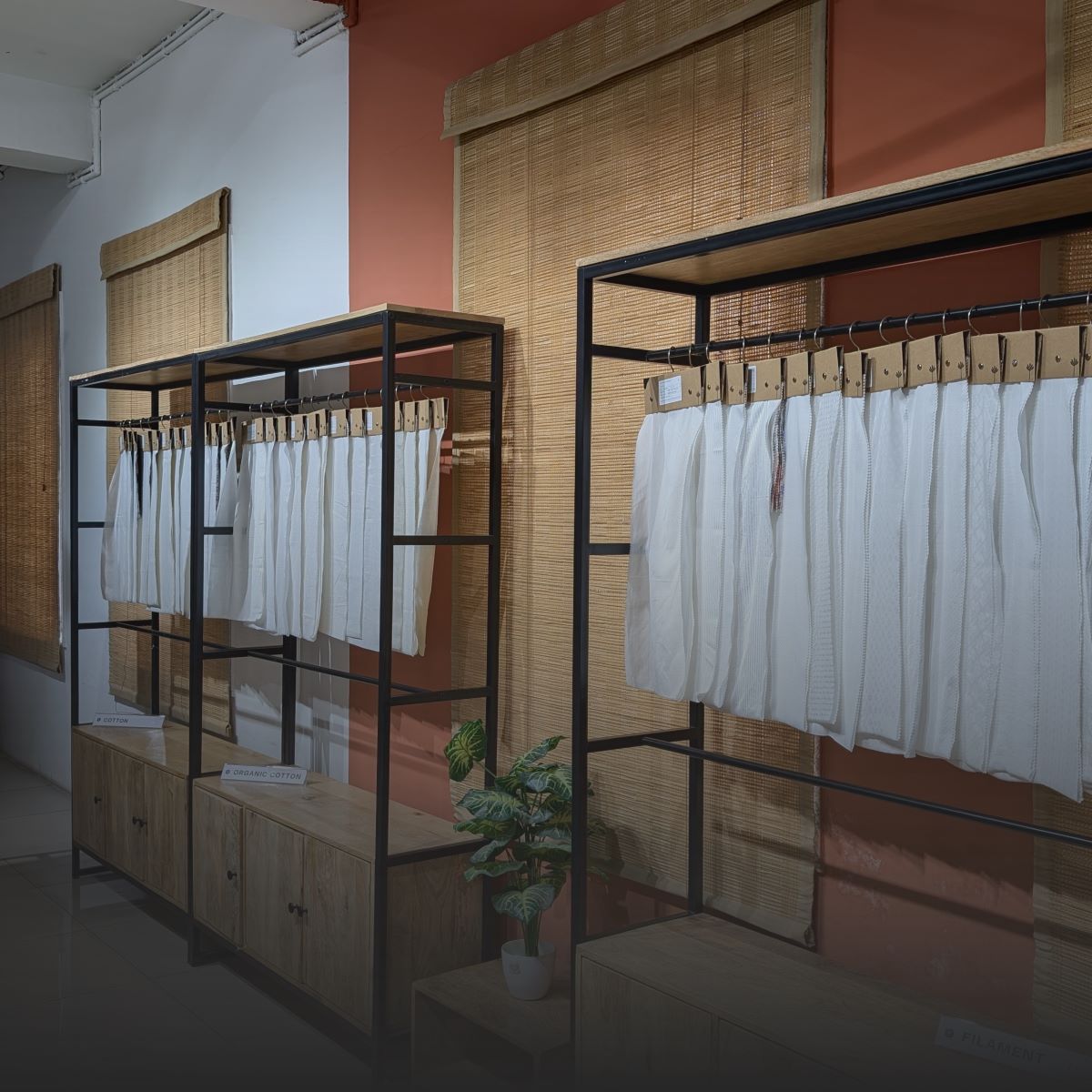Fabric management has become more complex across every part of the fashion supply chain. Faster timelines, smaller production runs and shifting sourcing patterns have changed how materials need to be handled. Many businesses still rely on tools that no longer support the pace of today’s production. That slows things down and increases the chance of error.
A fabric management system helps bring order to this process. It connects sourcing, development and production through one unified workflow. Without the right system, teams often face mismatched inventory, delays in restocking and confusion over fabric specifications. These issues grow quickly as teams scale or manage multiple collections at once.
A system with the right features can improve visibility, reduce waste and help everyone stay aligned. In this guide, you will find the features that matter most. Each one supports a specific step in the workflow, making it easier to plan, track and deliver fabric where it is needed.
As your business grows, these tools become essential—not optional. The next section explains what a fabric management system does and why your team depends on it.
The Role of a Fabric Management System Today

Fabric handling affects every step of apparel production. A gap in fabric records, a misread swatch or a late order often slows progress. These delays impact sampling, cost sheets and final delivery. As product lines expand, small issues begin to repeat across styles and teams.
A fabric management system addresses these issues early. It organizes all fabric data in one place. Sourcing, merchandising and production teams each use the same set of information. That reduces confusion, improves speed and keeps orders on track.
These are the key roles a fabric management system performs:
- Tracks live fabric inventory by color, mill and lot
- Stores swatches, specifications and compliance tags
- Links purchase orders to supplier performance
- Assigns fabric to SKUs and batch runs
- Forecasts material needs based on real usage
- Logs leftover rolls for future planning
Each feature supports a core task. Together, they remove manual steps that often lead to missed deadlines or stock mismatches. As teams grow, systems like these help maintain clarity and reduce pressure.
Now, let’s move to the first feature that supports this foundation: real-time inventory tracking.
Real-Time Inventory Tracking
Production planning depends on knowing what fabric is available. Without clear updates, teams face delays, miscommunication and missed delivery targets. A missing roll or incorrect stock figure can slow down sampling and shift the entire timeline. These problems often start when inventory is tracked across separate sheets or shared informally across teams.
A fabric management system keeps this information updated as fabric moves through the workflow. Each update reflects current stock, helping teams respond without second-guessing. This allows planning, sourcing and production to stay connected at every stage.
An effective tracking system should provide:
- Fabric counts by type, color, roll and width
- Quantity updates as the fabric is used or transferred
- Alerts when items drop below the reorder level
- Separation of available stock from committed stock
- Stock visibility across units or storage areas
With these tools in place, teams can plan ahead. They see what is ready, what is reserved and what needs attention. This reduces last-minute changes and avoids placing repeat orders for the same material. Once the stock is under control, the next step is creating a structured swatch and specification library.
Digital Swatch and Fabric Specification Library
Swatch folders are difficult to manage as teams grow. Physical samples go missing, notes fade, and records become inconsistent across departments. Designers, sourcing managers and production teams all need access to the same fabric details, but without a shared system, information gets lost or delayed. These gaps slow down development and create repeat questions during each new season.
A digital fabric library stores every swatch and specification in one place. Each team can view the same fabric profile without waiting for samples or searching through paper files. This supports faster approvals, better sourcing and more accurate planning.
A well-structured library should include:
- High-quality images of each swatch
- Fabric name, construction, weight and finish
- Color variants linked to the base fabric
- Supplier name, pricing and lead time
- Minimum order quantity and compliance tags
With this system, every fabric stays easy to reference and ready for use. It reduces back-and-forth between teams and supports better decisions throughout the product cycle. After setting up a clear fabric library, the next step is managing purchase orders without manual entry or repeated follow-up.
Purchase Order Automation
Placing fabric orders often involves long threads of emails, spreadsheets and manual follow-ups. Each step takes time and carries a risk of error. A small mistake in fabric name, quantity or supplier detail can slow down approvals and delay production. Without a connected system, teams lose track of what was ordered, when it was placed and what is expected.

A fabric management system with automated purchase orders removes these blocks. It links fabric planning to supplier data, helping teams raise, track and confirm orders in one workflow. This keeps sourcing smooth and reduces delays caused by manual steps.
A good purchase order system should offer:
- Templates that pull fabric and supplier details automatically
- Order tracking by status and expected delivery date
- Records of past orders linked to each fabric
- Alerts for pending confirmations or delays
- Central visibility for all active and completed orders
This helps sourcing teams spend less time on paperwork and more time managing timelines. With orders under control, the next step is assigning fabric to the right styles and batches to support accurate production.
Fabric Allocation to Styles and Batches
As production scales, assigning the right fabric to the right style becomes harder to track. One fabric may be used across multiple SKUs, each with different size sets and delivery dates. Without a system to manage these links, allocation becomes unclear. This leads to double booking, shortages or late substitutions that affect quality and fit.
A fabric management system helps prevent this by mapping available fabric to each style or order. It shows how much is needed, how much is available and what is already committed. Teams stay aligned across sourcing, merchandising and production.
Key features that support allocation include:
- Assigning fabric to styles, sizes or production batches
- Tracking how much is planned versus how much is used
- Blocking fabric once an order is confirmed
- Notifying teams if fabric runs short before allocation
- Linking fabric usage to actual consumption reports
This structure helps keep orders accurate and production timelines steady. Once the allocation is clear, the next step is forecasting how much fabric you will need to meet future orders without overstocking.
Fabric Consumption Forecasting

Without a clear forecast, fabric orders often swing between overstocking and shortage. Extra fabric ties up capital and storage, while running short can stop production. Relying on guesswork or old spreadsheets leads to poor decisions, especially when style counts grow or delivery timelines shift. A fabric management system helps avoid this by turning past data into future planning.
Forecasting tools track how fabric is used across orders, styles and seasons. They show patterns in usage that help teams decide how much to order next. This makes it easier to plan fabric purchases based on real needs.
A strong forecasting system should include:
- Usage reports by fabric type, color and order
- History of past consumption linked to each style
- Alerts when upcoming orders may exceed the current stock
- Comparison of planned use against actual use
- Suggestions based on repeat styles or materials
With these tools in place, sourcing becomes more stable. Teams make informed decisions that save both time and cost. Once forecasting is set, the next focus is reducing leftover fabric that builds up over time.
Waste and Deadstock Management
Leftover fabric builds up over time when there is no system to track what remains after production. These rolls often sit unused because teams do not know what is available, where it is stored or how much of it can still be used. Without clear records, fabric that could support future sampling or short runs goes to waste.
A fabric management system helps reduce deadstock by keeping track of leftover quantities across all stages. It shows what is unused, links it to previous orders and makes it easier to repurpose that fabric before placing new orders.
Effective waste tracking includes:
- Recording leftover rolls by type, color and size
- Linking fabric remnants to original styles and orders
- Making unused fabric searchable for future use
- Reporting waste levels over time by batch or order
- Supporting planning decisions that reduce excess
With this visibility, teams make better use of what they already have. This not only reduces material waste but also lowers costs. After managing leftover stock, the next step is giving teams flexible access to fabric data wherever they work.
Access and Mobility

Fabric decisions often happen outside the office. Teams may be at a vendor meeting, in a factory unit or working remotely. Without access to current data, they rely on screenshots, calls or files saved offline. This slows progress and increases the risk of error.
A fabric management system with mobile access helps teams stay connected. It lets them check stock, review swatches or update orders without needing to be at a desk. This supports faster decisions and reduces delays during key stages of development and production.
Important features that support access and mobility include:
- Secure login from desktop, tablet or phone
- Real-time updates across all devices
- Permission control for different user roles
- Offline access for key fabric data
- Location tracking for stock across multiple units
With mobile access, fabric planning becomes more flexible. Teams stay aligned even when they are in different locations. Once access is reliable, the next step is connecting your system with the tools already used in design and production.
Integration with Existing Systems
As fashion businesses scale, their tools multiply. Design teams use CAD software. Production tracks workflows through ERP. Merchandisers rely on planning tools. Without a connection between these platforms, information stays scattered. Teams waste time updating the same data in different places, leading to errors and delays.
A fabric management system that integrates with existing tools helps close these gaps. It reduces double entry, keeps data consistent and makes collaboration easier. This improves how teams work together across design, sourcing and production.
Strong integration features include:
- Syncing with ERP to share order and stock updates
- Connecting with PLM to link fabric specs to styles
- Allowing data import from spreadsheets or external systems
- Enabling push or pull of data from third-party platforms
-
Keeping change logs visible across connected tools
These functions help build a clear, unified workflow. They keep each team focused on their task while staying informed. After connecting core systems, the next step is managing vendor records and tracking compliance across fabric suppliers.
Vendor Management and Compliance Tracking

Working with multiple suppliers often brings challenges. Details about pricing, lead times and certifications may stay in scattered files or email threads. When this information is hard to find, teams spend time chasing updates or repeating steps across orders. These delays grow as more vendors get added to the supply chain.
A fabric management system helps by keeping vendor data in one place. It tracks key records and links them to each fabric and order. This helps teams compare suppliers, manage timelines and ensure that compliance is met during sourcing.
Important vendor tracking features include:
- Lead times, payment terms and minimum order quantities
- Certifications linked to specific fabrics
- Performance history across past orders
- Notes or alerts for vendor risks or delays
With this structure, teams manage sourcing with greater confidence. They respond faster and make informed choices based on full records. Once vendors are aligned, the final step is reviewing how the system supports your business as it grows.
How Fabriclore Supports Fabric System Goals
For brands that aim to streamline their sourcing and production, finding the right supplier is a key step. Fabriclore supports this need by offering a structured approach to fabric selection, customization and delivery. Our services align closely with the goals of a modern fabric management system, helping teams move faster while staying organized.
Fabriclore offers:
- Certified sustainable fabrics
- Digital swatches for faster sampling
- Low MOQ options for flexible ordering
- Custom dye and print services
- Vendor coordination across production stages
- Fast delivery across India and global regions
Each of these services supports system-level efficiency. Digital swatches reduce sampling time. Custom options support design teams without added steps. Low MOQs help brands test styles without overcommitting. Central coordination reduces the need to manage multiple vendors. These solutions help businesses maintain speed, accuracy and control across collections.
By aligning your sourcing with a supplier that understands these goals, your fabric system becomes easier to manage and scale.
Final Thought
Fabric decisions affect every part of your workflow. From sourcing to production, each step depends on clear information, timely action and consistent follow-through. A fabric management system helps teams move with confidence by keeping key details connected, accurate and easy to access.
The features shared here are not extras. They solve real problems faced by small teams and growing businesses. Each function supports better planning, fewer errors and stronger outcomes.
As your business changes, these tools help you stay in control. Start with the features that match your current needs, then continue building a system that supports your team as it grows. With the right structure in place, fabric becomes a strength instead of a challenge.
FAQs
What is fabric management?
Fabric management is the process of organizing, tracking and using fabric across sourcing, design & production. It helps avoid waste, maintain stock visibility and support smooth production workflows.
What is an FMS management system?
An FMS (Fabric Management System) is software that helps fashion teams manage fabric data, stock, swatches, orders and vendor details in one place. It reduces manual work and supports faster, error-free production.
What is fabric software?
Fabric software is a tool used by fashion and manufacturing businesses to manage fabric inventory, track orders and store swatch details. It improves material planning and connects with systems like ERP or PLM.
What is a tailoring management system?
A tailoring management system helps tailoring shops manage customer measurements, fabric selections, orders and deliveries. It improves daily operations and ensures accurate service tracking.




